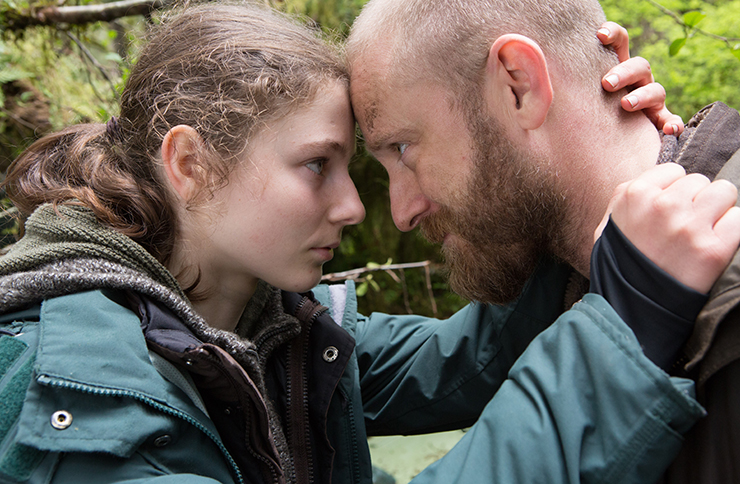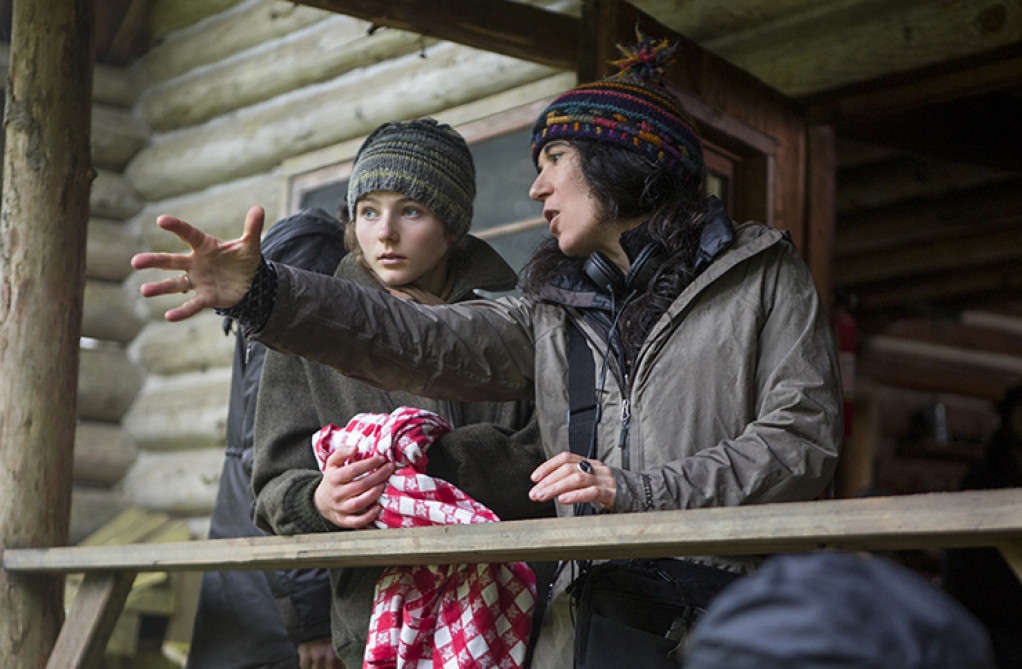'Surround yourself with a great team' Leave No Trace director Debra Granik on her filming process
Debra Granik is an award-winning director known for her Oscar-nominated feature film Winter's Bone, which helped launch the career of actress Jennifer Lawrence. Here the American director tells Mandy News about her new film Leave No Trace – which has already picked up awards at the Heartland and Boston Film Festivals – as well as what her directing process was like on the film and what directors can do to succeed.
Please introduce yourself to us and tell us how you got involved in the film industry and into writing and directing in particular.
My name is Debra Granik and I got my start in filmmaking through documentary filming: recording the everyday lives of people in their workplaces. After many years of doing that kind of work, I wondered how I would get the skills and exposure of how to put some of those details and experiences into narrative structures and make stories from them.
Then I went to film school in New York and continued to hone some ideas about social-realism. I had a wonderful mentor there who came out of the former Soviet Union. He’d speak to us on Eastern European filmmaking and social realism [laughs]. British kitchen sink dramas were the big favourite of our curriculum!
Social-realism, wherever it was practiced and wherever it was created, was the core of what we studied. I had a chance to create short films in that context and learned a lot of the skills in the field - actual production skills. The short films led to the ability to create a larger project.
Along the way I was helped by the Sundance lab, especially on the conversion of a short film to a longer one. It was so helpful just to be encouraged and to have the opportunity to workshop the scenes. Once you have a film that gains attention, or is positively received, then you’re basically further encouraged to try it again. That’s sort of been the course of things.
***** Read our interview with Pin Cushion director Deborah Haywood *****
How did you get involved in Leave No Trace and what drew you into the project?
I was sent the book by two producers, Anne Harrison and Linda Reisman, here in New York. The book was very good read because of the rich environment, because of the mystery that immediately struck me. Why were these two people living undetected? What was motivating them? What was the need there? How were they doing it? What would come of them if they were detected?
If there are good, provocative questions that can’t be answered easily, that’s enough for me to be interested and tells me there must be other people who are interested in this story. It felt very feasible as well. It was not an elaborate set of locations, there were no stunts or tricks involved. It was a very straight forward story to film.
What was the process from first getting involved with the film to adapting and shooting it?
The adaptation process was lengthy. We tried many different versions and some started to deviate from the novel itself, therefore it took some time to create that screenplay. To get information and inspiration from the real locations, we took the script out to Oregon and asked people who had real-life experiences about the roles in the script. We asked them to share their methodologies which informed the script in many, many ways and created that next layer. From there, it went to casting and the cast further influenced the script. At rehearsals, they do their take on things, the lines that don’t feel right to them and through the lines they add.
When you’re working on a film that has such a small cast, for example you’re focussed on two members in this film, how do you maintain that focus?
The fact is, the interrogation by the social workers meant the actors needed to know about their background – that was going to be the major vehicle for the backstory. They were going to rub up against characters, so you’re going to get these different facets of them. Yes, the time is predominantly between them but these other times will be very incisive and they will show you how each of these people relate to the larger world. All those interactions are going to be very important. For example, someone they felt close to like how Tom felt very attracted to the beekeeper and other times, it was more about authority and how they dealt with someone wanting to have a say in how they should live.
***** Read our interview with film producer and Birds' Eye View director Mia Bays *****
How did you come across Thomasin? She’s getting fantastic reviews.
Tom was an actor from New Zealand who was looking for projects to get involved with and she responded really strongly to the script. She had great conversation. Though, I never thought I’d be casting someone from so far away, the way in which she presented her thoughts on the material, her willingness and her openness made her irresistible.
I knew she’d be an outstanding collaborator and she, in short, made it really possible to take time from school and be here. It was so fortuitous that she both liked the script and that she could make this monumental arrangement to come here to do it.
The chemistry between her and Ben, was that instant? That father-daughter relationship?
They didn’t know each other. They had a lot of rehearsing and skill training; doing different things that would enable them to build a rapport. In a film like this, there has to be some time for that. There had to be isolated rehearsals so they could go off and spend time in that campsite without any crew or production team. To learn their ways, ask questions of each other and try to execute things together. They tried to build an emergency shelter together so that was great bonding.
It’s action vs. language - they didn’t have to figure out what they had to talk about, they had to do things together.
The terrain is extremely beautiful but also very dangerous and harsh. What were the challenges shooting there and showing the beauty as well as the danger of it?
The same exact stand of trees that show that there still is this force that is much greater than us amidst the same stand of trees when the sun is shining and there is not high velocity winds. You feel very much like it’s a very easy place to be and that changes the minute the wind strikes up and the temperature drops. The same place becomes a more perilous place to be.
It was a reminder, being in that forest. Our predecessors had much more of an ability to ride those vicissitudes than we do. That’s part of what the primitive film movement is - recapture or relearn some of what people knew previously.
 LEAVENOTRACE
LEAVENOTRACE
Leave No Trace actors Thomasin McKenzie and Ben Foster
When you were filming in the forest, were you using much lighting?
Technically, no. We were using natural light. It wasn’t possible to bring in big lighting for this film at all because we had to travel to carry things in. Sometimes we would use a small instrument for augmentation but mostly it was the art of reflecting the light. Tamping it down with silks, bouncing it around and then using cucoloris and shades and dappled light to modify the sun patch. The rain gave its own tone and that was really appreciated.
Would you say the lighting and the terrain were the biggest challenges in making the film?
No, because the forest was giving and giving and giving and the rain we knew how to deal with given that the Oregon crew could instruct us because they know how to do that.
I think time is the non-negotiable issue that all or most film crews and film productions face. Running out of time and knowing there are a few ways to experiment left and having to pick which version really quickly. Not being able to explore something fully. Having to cut things off. That’s very inherent in filmmaking. That never gets easier.
How long was production?
It was a 30 day shoot.
How long was the edit and post?
The edit was long. I came back in June and we locked in October and made some changes in November.
What have you got on next?
I’m trying to finish a documentary that’s taking place in the New York area. It deals with life after incarceration. We’re trying to finish that in the summer and edit quite a lot of years of footage. We’re trying to shape that. It’s very hard. It’s real life and real life has so many nuances and incidences and events that you can’t always organise it so easily. It takes you by surprise still, frequently. I’m trying to work on a narrative, it’s an adaptation of a non-fiction book called Nickel and Dimed.
What advice would you have for young people interested in becoming writers and directors like yourself?
I would say surround yourself with a great team. It’s who you make the films with. Take humble subject matters to start with. I would say get a feasible film to be made and then a highfalutin’ crazy complex one.
Sign up to Mandy.com for free to see directing jobs.
Comments


An interview with Emmy nominated cinematographer Arlene Nelson
Mandy News talks to Cinematographer Arlene Nelson, whose camera work has led to collaborations with iconic dir...

"Don’t be shy to reach out to anyone you really want to connect with" editor Christopher S Capp
Mandy News talks to Film Editor Christopher S. Capp who is known for his work on The Hunge...

"If you keep at it and don’t give up you will get where you want to go" Sean Gascoine
Sean Gascoine is working for one of the biggest talent agencies in the world, United Agents. He started his ca...

"Having your own voice is the important thing" with production & costume designer Fiona Crombie
Fiona Crombie, production designer and costume designer, known for Macbeth, Top of the Lake and Una...
Popular

Advice for Actors: Comparisons
In this month's advice column, film & TV industry Psychologist, Charlotte Armitage talks about comparing your...

Advice for Actors: The value of Networking
In this month's advice column, film & TV industry Psychologist, Charlotte Armitage talks about the importance...

Advice for Actors: Therapy
In this month's advice column, film & TV industry Psychologist, Charlotte Armitage talks about the importance...

Wrapal Acquired by Set Scouter, Creating Largest Locations Company in North America
Wrapal, the film industry’s first startup connecting filmmakers to film locations, has been acquired...

An Interview with Three Billboards Outside Ebbing, Missouri Director, Martin McDonagh
Oscar-nominated writer-director Martin McDonagh has found big-screen success with the pitch black humor of In...

An Interview with Dave Fennoy, voice of Lee Everett in 'The Walking Dead' Game
Dave Fennoy is an award winning voice actor whose best known work among others is the role of Lee Everett...

"Get on set and wear those hats, try those things" cinematographer Pietro Villani
Los Angeles based cinematographer Pietro Villani has been shooting movies, documentaries, shorts and commercia...

An Interview with Brennen Sheridan Dicker, Head of Creative Media Industries Institute
Brennen Sheridan Dicker is the Head of Creative Media Industries Institute (CMII) at Georgia State U...

